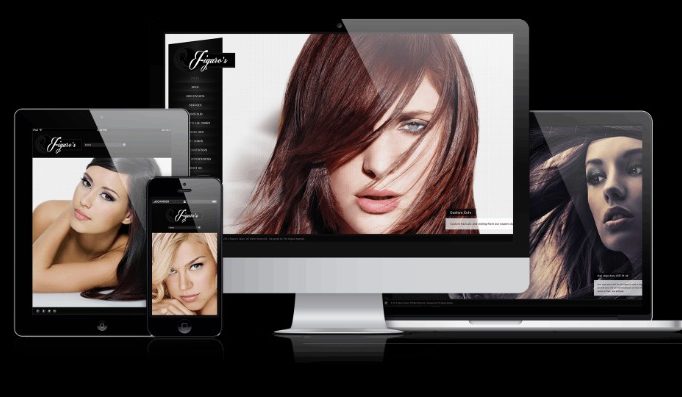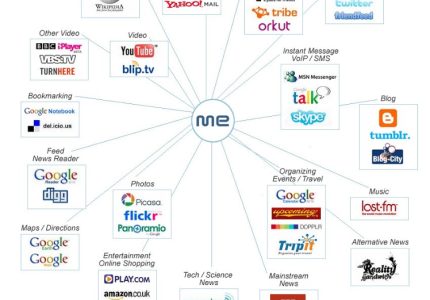Fundamentals of Graphic Design
Understanding the fundamentals of graphic design is essential for creating visually appealing and effective websites. It involves mastering key elements such as layout, color, typography, and visual hierarchy to communicate ideas clearly and engagingly. By applying these principles, designers can craft designs that not only attract attention but also enhance user experience and convey messages with impact.
Principles of Design
Fundamentals of graphic design are essential for creating visually appealing and effective websites. They encompass a range of principles that guide the arrangement of elements to communicate messages clearly and attractively. Understanding these principles helps designers craft layouts that engage users and convey content successfully.
The principles of design include balance, contrast, hierarchy, alignment, repetition, proximity, and space. Balance involves distributing visual weight evenly across the design to create stability. Contrast emphasizes differences between elements to draw attention and improve readability. Hierarchy organizes content so that the most important information stands out first. Alignment creates a clean, ordered appearance by lining up elements consistently. Repetition reinforces a cohesive look throughout the site, while proximity groups related items together to aid comprehension. Space, or whitespace, gives the design room to breathe and prevents clutter, making content easier to navigate and understand.
In website design, applying these principles effectively ensures the site is not only attractive but also user-friendly. Good use of these fundamentals enhances usability, guides users through content seamlessly, and creates a memorable visual experience that aligns with brand identity and communication goals.
Color Theory
Color theory is a fundamental aspect of graphic and website design, influencing how visual elements communicate and evoke emotions. Understanding color relationships, such as complementary, analogous, and triadic schemes, helps designers create balanced and harmonious compositions. Color also plays a role in guiding user attention, highlighting important features, and establishing brand identity. Effective use of color can improve readability, usability, and aesthetic appeal, making it a crucial component in successful graphic and web design projects.
Typography
Typography is a fundamental element of graphic and website design that significantly influences the overall aesthetic and communication effectiveness. It involves the selection, arrangement, and style of fonts to enhance readability and convey the intended message clearly. Good typography balances visual appeal with functionality, guiding viewers through content seamlessly and establishing a cohesive visual identity.
Understanding core principles such as hierarchy, contrast, alignment, and consistency is essential to effective typography. Hierarchy helps prioritize information, making important elements stand out, while contrast ensures readability and visual interest. Alignment fosters a clean and organized layout, and consistency creates a unified look across a design. Mastering these principles ensures that text not only complements the visual design but also enhances user experience on websites and graphics.
Composition and Layout
Fundamentals of graphic design, composition, and layout play a crucial role in creating visually appealing and effective websites. These principles ensure that the content is organized in a manner that guides the viewer’s eye smoothly across the page, enhancing readability and user experience. Good composition involves balancing elements such as text, images, and whitespace to create harmony and focus points that direct attention appropriately.
Layout refers to the arrangement of visual elements on a page, emphasizing consistency and coherence. Utilizing grids and alignment techniques helps achieve a structured and professional appearance, making the design easier to navigate. Color schemes, typography, and imagery should work together to reinforce the overall message and aesthetic. Mastering these design fundamentals is essential for developing websites that are not only visually engaging but also functionally effective, fostering better communication between the site and its users.
Imagery and Iconography
Fundamentals of Graphic Design, imagery, and iconography are essential components in creating effective and visually appealing websites. They serve to communicate messages clearly and enhance user experience by guiding attention and evoking emotions. Good use of imagery helps establish brand identity, convey complex ideas quickly, and create a memorable visual impact. Iconography complements this by providing simple, recognizable symbols that facilitate navigation and understanding, especially in interface design. When integrated thoughtfully, these elements contribute to a cohesive aesthetic, improve usability, and reinforce the overall design concept.
Tools and Software for Graphic Design
Tools and software play a crucial role in the world of graphic and website design, providing designers with the necessary features to bring their creative visions to life. From powerful image editing applications to versatile website builders, these tools streamline the design process and enhance overall productivity. Mastering the right software can significantly impact the quality and efficiency of both graphic and web projects, making it essential for professionals to stay updated with the latest technological advancements in the field.
Adobe Photoshop
Adobe Photoshop is a powerful and widely-used tool in graphic and website design, offering a versatile platform for creating and editing images, graphics, and visual elements. It provides a broad range of features including advanced photo editing, layer management, and comprehensive tools for designing web graphics, banners, and UI elements. Photoshop’s extensive plugin support and integration with other Adobe Creative Cloud applications make it an essential software for designers looking to craft polished and professional visuals for websites and digital projects.
Adobe Illustrator
Adobe Illustrator is a powerful tool widely used in graphic and website design for creating vector graphics and complex illustrations that are scalable without loss of quality.
- Vector Graphics Creation: Enables designers to craft sharp and scalable graphics suitable for various web and print applications.
- Illustration Tools: Provides a comprehensive set of drawing tools, including pen, brush, shape, and pathfinder options, to develop detailed artwork.
- Typography and Text Optimization: Facilitates advanced text manipulation and font styling to enhance website headers, logos, and graphic elements.
- Asset Export: Supports exporting assets in multiple formats optimized for web use, ensuring quick loading times and high quality.
- Integration with Adobe Creative Cloud: Seamlessly collaborates with Photoshop, XD, and other Adobe apps for a streamlined workflow.
- Design Templates and Resources: Offers access to numerous templates, brushes, and design assets to speed up the creative process.
Canva
Canva is a popular and versatile tool used extensively in graphic and website design for creating visually appealing content with ease. It offers a user-friendly interface that simplifies the design process, making it accessible to both beginners and professionals. Canva provides a wide range of templates, stock images, icons, and fonts, enabling users to craft custom graphics, social media posts, presentations, and website elements efficiently. Its collaborative features allow teams to work together seamlessly, streamlining the creative workflow. Overall, Canva has become an essential tool for designers looking to produce high-quality visual content quickly and effectively without the need for advanced technical skills.
Sketch
Tools and software play a crucial role in the field of graphic and website design, enabling designers to bring their creative visions to life efficiently and effectively. Sketch, a popular vector graphics editor, is widely favored for its streamlined interface and specialized features tailored for UI/UX design. It offers an array of tools for designing wireframes, prototypes, and high-fidelity visuals, making it a versatile choice for both web and app design projects. Additionally, Sketch’s expansive library of plugins and integrations enhances functionality, allowing designers to customize their workflow and collaborate seamlessly with developers. Other essential tools in the industry include Adobe Photoshop for detailed image editing, Adobe Illustrator for creating vector graphics, and Figma for cloud-based collaborative design work. These software solutions collectively empower designers to produce visually compelling and user-friendly websites, ensuring a seamless user experience across digital platforms.
Figma
Figma is a highly popular and versatile tool used in graphic and website design, enabling teams to collaborate seamlessly in real-time. It facilitates the creation of prototypes, wireframes, and detailed UI designs with an intuitive interface suitable for both beginners and experienced designers.
- Collaborative Design: Multiple users can work simultaneously, improving teamwork and reducing feedback cycles.
- Cloud-Based Platform: Being web-based, Figma allows access from any device with an internet connection without the need for installations.
- Prototyping and User Testing: Built-in tools enable designers to create interactive prototypes to test user flows and usability.
- Design System Support: Figma supports shared styles, components, and libraries that promote consistency across projects.
- Version History: Automatic saving and version control help track changes and revert when necessary.
- Plugins and Integrations: A wide range of plugins extend functionality, including stock images, icons, and accessibility tools.
Website Design Essentials
Understanding the essentials of website design is crucial for creating visually appealing and user-friendly online platforms. A strong foundation in graphic and website design principles ensures that websites are not only attractive but also functional and easy to navigate. By mastering these essentials, designers can effectively communicate their message, engage visitors, and enhance overall user experience.
User Experience (UX) Design
Effective website design essentials play a crucial role in creating engaging and functional online platforms. A key component of successful design is User Experience (UX) Design, which focuses on maximizing user satisfaction by improving the usability, accessibility, and overall interaction with the website. Good UX design involves understanding user needs, behaviors, and preferences to develop intuitive navigation, clear content organization, and visually appealing layouts. Additionally, incorporating responsive design ensures that websites perform well across various devices and screen sizes. Visual hierarchy, consistent branding, and fast load times further enhance the user experience, making visitors more likely to stay, explore, and convert into customers. Overall, integrating solid UX principles into website design results in a seamless, enjoyable experience that aligns with the goals of both users and businesses in the realm of graphic and website design.
User Interface (UI) Design
Effective User Interface (UI) design is a crucial element of website design, directly impacting how users interact with a site and how they perceive its overall quality. A well-crafted UI ensures that navigation is intuitive, processes are simple, and content is easily accessible, leading to a positive user experience. Key principles of UI design include consistency in layout and visual elements, clarity in presenting information, and responsiveness across different devices and screen sizes.
Incorporating clear visual hierarchy helps users quickly identify important sections and understand the flow of information. The use of appropriate color schemes, typography, and spacing enhances readability and aesthetic appeal. Additionally, interactive elements such as buttons and links should be easily identifiable and provide feedback to guide users seamlessly through their journey on the site. A thoughtful UI design complements the overall graphic design, creating a cohesive and engaging website that effectively communicates its purpose and brand identity.
Wireframing and Prototyping
Website design essentials are fundamental principles that ensure a site is visually appealing, user-friendly, and functional. Key aspects include layout, color schemes, typography, and usability. Incorporating these elements creates an engaging experience that attracts and retains visitors.
Wireframing and prototyping are critical steps in the design process, allowing designers to plan and visualize the website’s structure and interactions before development begins. Wireframes serve as simplified blueprints, highlighting the placement of content and navigation, while prototypes simulate real user experiences, enabling usability testing and iterative improvement.
- Clear and logical layout to enhance navigation and accessibility
- Consistent color schemes and typography that reflect brand identity
- User-centered design focusing on ease of use and engagement
- Wireframes that outline basic page structure and content hierarchy
- Prototypes that allow testing of functionality and user flow
- Iterative feedback incorporation to refine the design before final implementation
Responsive Design
Responsive design is a crucial element of modern website development, ensuring that websites function seamlessly across a variety of devices and screen sizes. It enhances user experience by providing a visually appealing and easy-to-navigate interface, whether viewed on a desktop, tablet, or smartphone.
Implementing responsive design involves using flexible grid layouts, scalable images, and media queries to adapt the website’s layout and content dynamically. This approach reduces the need for multiple versions of a site and streamlines maintenance, while also improving search engine rankings.
For effective graphic and website design, it is essential to prioritize clarity, simplicity, and visual hierarchy. Consistent use of color schemes, typography, and imagery helps create an engaging and cohesive look that guides users naturally through the content.
Overall, responsive design is an integral component of website design essentials that contributes to a professional appearance, increased accessibility, and better user engagement in today’s digital landscape.
Accessibility Standards
Understanding accessibility standards is essential for effective website design, ensuring that digital content is usable by everyone, including individuals with disabilities. Incorporating accessible design principles involves creating websites that are easily navigable with assistive technologies, such as screen readers, and providing clear, descriptive content. Using sufficient color contrast, alternative text for images, and logical structure enhances readability and usability for all users. Additionally, ensuring keyboard accessibility allows users to navigate the site without relying solely on a mouse. Adhering to established accessibility guidelines, such as the Web Content Accessibility Guidelines (WCAG), helps develop inclusive websites that meet legal requirements and improve user experience across diverse audiences.
Building Effective Websites
Creating effective websites involves a seamless blend of graphic design and functional layout to engage users and deliver a compelling experience. A well-designed website not only attracts visitors but also guides them intuitively through the content, making information accessible and aesthetically pleasing. Understanding the principles of effective graphic and website design is essential for building sites that are both visually appealing and highly usable.
Content Strategy
Building effective websites requires a well-thought-out content strategy that aligns with the overall graphic and website design. A clear and organized content plan ensures that visitors can easily find relevant information, enhancing their user experience. Incorporating engaging visuals and intuitive layouts complements the content, making the website more attractive and accessible. Consistency in messaging and visual elements helps reinforce brand identity, while strategic use of headings, keywords, and calls-to-action guides visitors toward desired actions. Ultimately, integrating compelling content with cohesive design creates a powerful online presence that captures attention and drives engagement.
Navigation and Structure
Building effective websites requires a clear focus on navigation and structure to ensure a positive user experience. An intuitive navigation system guides visitors effortlessly through the content, helping them find information quickly and efficiently. Consistent menus, logical grouping of pages, and clearly labeled links contribute to a seamless browsing experience. Additionally, a well-organized website structure creates a hierarchy that highlights important content and reduces clutter, making the site more accessible and user-friendly. Good design principles emphasize simplicity and clarity, enabling users to navigate naturally without confusion or frustration. Ultimately, a thoughtfully designed structure enhances engagement, supports branding objectives, and encourages repeat visits.
Visual Hierarchy
Building effective websites relies heavily on the principles of visual hierarchy, which guide visitors’ attention and ensure that the most important information stands out. In graphic and website design, visual hierarchy involves arranging elements so that users naturally focus on key content first, then process supporting details. Techniques such as size variation, color contrast, spacing, and positioning help create a clear flow of information. For example, larger headlines draw immediate attention, while subtle elements like background colors or whitespace provide a balanced and organized appearance. By thoughtfully applying these principles, designers can improve user experience, make navigation intuitive, and communicate messages more effectively.
Performance Optimization
Building effective websites requires careful consideration of graphic and website design principles to ensure a seamless user experience and optimal performance. Visual elements should be balanced with functionality, creating an engaging interface that loads quickly and functions smoothly across devices.
- Use optimized images by compressing files without sacrificing quality, reducing load times and improving responsiveness.
- Implement a clean and consistent design layout that guides users naturally through the content.
- Choose a color scheme and typography that enhance readability and appeal visually, while maintaining brand identity.
- Minimize the use of unnecessary scripts and plugins that can slow down page rendering.
- Leverage caching techniques to store frequently accessed data locally, speeding up repeat visits.
- Prioritize mobile-first design to ensure performance and aesthetics are maintained on smaller screens.
- Utilize asynchronous loading for scripts and stylesheets to prevent blocking page rendering.
- Regularly test website speed using tools to identify and address bottlenecks and performance issues.
- Maintain simplicity by removing clutter and focusing on essential design elements to enhance user engagement and site efficiency.
Search Engine Optimization (SEO)
Building effective websites requires a balanced combination of compelling graphic design and strategic search engine optimization (SEO). An attractive and user-friendly visual layout captures visitors’ attention, encouraging them to explore further. Clear navigation, consistent branding, and engaging visuals enhance user experience and retention. Simultaneously, implementing SEO best practices such as keyword research, quality content creation, fast loading times, and mobile responsiveness ensures that the website ranks higher in search engine results. Integrating visually appealing graphics with optimized content helps attract targeted traffic and establish a strong online presence. Therefore, effective website design focuses not only on aesthetics but also on technical strategies that improve visibility and accessibility to users across various platforms.

Latest Trends in Design
Recent trends in graphic and website design are shaping the way digital experiences are created and experienced. Innovative use of bold colors, minimalist layouts, and immersive visuals are at the forefront, reflecting a desire for both aesthetics and functionality. designers are increasingly focusing on user-centric approaches, incorporating interactive elements and responsive design to enhance engagement across devices. Staying current with these trends allows brands to stand out in a crowded digital landscape and deliver compelling, modern experiences to their audiences.
Minimalism
Modern graphic and website design are increasingly embracing minimalism to create clean, focused visuals that enhance user experience. The latest trends emphasize simplicity, with streamlined layouts, ample white space, and bold typography to draw attention to key content. Designers are moving away from cluttered interfaces, favoring minimal color palettes and straightforward navigation to ensure intuitive usability. Additionally, subtle animations and micro-interactions are integrated to add a touch of sophistication without overwhelming the user. Responsive design remains a core component, ensuring websites look and perform perfectly across all devices. Overall, minimalism in design continues to evolve as a powerful approach to convey clarity and elegance while prioritizing functionality and user engagement.
Dark Mode
Dark mode has become one of the most prominent trends in graphic and website design, offering a sleek and modern aesthetic that reduces eye strain and enhances user experience. Designers are increasingly incorporating dark color schemes, which not only provide a sophisticated look but also improve readability for many users, especially in low-light environments. The trend emphasizes minimalism, with clean layouts, contrasting typography, and subtle accents that create a visually appealing interface. Additionally, dark mode promotes energy efficiency on OLED and AMOLED screens, making it popular among environmentally conscious designs. As performance and user preferences evolve, we see more websites and applications adopting customizable themes, allowing users to switch seamlessly between light and dark modes based on their needs and preferences. Overall, dark mode continues to shape contemporary design by blending functionality with aesthetics, pushing the boundaries of creative expression in digital interfaces.
Microinteractions
Recent developments in graphic and website design emphasize the importance of microinteractions as a key trend. These subtle, engaging moments enhance user experience by providing feedback, guiding actions, and adding a layer of delight to digital interfaces. Designers are increasingly incorporating animated icons, hover effects, and small visual cues to make interactions feel more intuitive and enjoyable. Additionally, the use of minimalist aesthetics combined with microinteractions creates clean, modern interfaces that prioritize functionality while maintaining visual appeal. As technology advances, personalized and context-aware microinteractions are becoming more prevalent, offering users a seamless and engaging experience tailored to their behavior. Overall, microinteractions are shaping the future of design by blending aesthetics with usability, fostering deeper engagement, and simplifying complex processes within digital environments.
Augmented Reality (AR) Integration
Recent developments in graphic and website design showcase a significant rise in augmented reality (AR) integration, transforming user experiences to be more interactive and immersive. Designers are increasingly blending digital and physical environments, allowing users to engage with content in three-dimensional space, which enhances engagement and brand storytelling. AR features such as virtual try-ons, interactive product views, and immersive navigation are becoming standard, providing dynamic ways for users to explore design elements beyond traditional screens. Additionally, enhanced AR tools and platforms are making it easier for designers to incorporate seamless AR experiences into websites without requiring extensive coding knowledge. This trend reflects a broader shift towards multisensory interfaces that captivate users and offer innovative, personalized interactions in both graphic and website design.
Bold Typography and Vibrant Colors
Recent trends in graphic and website design emphasize the use of bold typography and vibrant colors to create visually impactful and engaging experiences. Designers are increasingly opting for large, eye-catching fonts that command attention and convey messages with clarity. Pairing these with a palette of vivid hues helps websites stand out and evoke strong emotional responses from users. Together, these elements foster a modern, dynamic aesthetic that captures audience interest and enhances overall usability. Incorporating bold typography and vibrant colors is now a key strategy for brands aiming to make a memorable digital impression.





